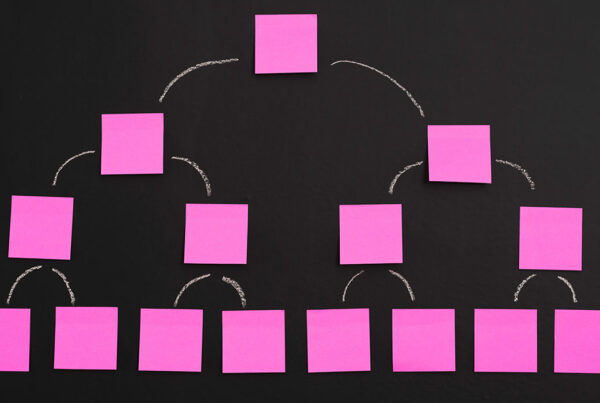To provide reliable information, journalists must be well informed and rely on solid sources. A reliable source makes it possible to distinguish between truth and falsehood and to guarantee the authenticity of information. Every piece of information must be verified to prevent the spread of false information.
Definition
In the context of information, a source refers to the origin of a piece of information. This can be a person, a document, a recording, or even an event. Asking the question “Where does this information come from?” is essential to verifying its reliability.
Knowing the source allows you to judge whether the information is credible, whether it can be corroborated by other elements, and whether it can be disseminated with confidence.
Types of sources
Information sources can be classified into several categories according to their nature and their proximity to the event.
Primary source
A primary source is a direct element, meaning a source that comes directly from the event or situation.
Examples: testimony from a witness, an interview, an official document, a video, a photograph, an audio recording, etc. (A journalist interviewing a witness who saw a car accident.)
Advantage: The primary source is often considered more reliable, as it comes directly from the event without intermediaries.
Secondary source
A secondary source involves one or more intermediaries to transmit the information. It is a reformulation, an analysis, or an interpretation of the content of original sources.
Examples: A news report that summarizes a political speech without having attended it directly.
Advantage: It allows for cross-checking information but is less direct.
Tertiary source
Tertiary sources compile and synthesize information from secondary sources.
Examples: encyclopedias, databases, summary reports.
Advantage: They provide an overall overview of a subject but may contain errors or biases linked to the editorial choices of the authors.
Anonymous sources
Sometimes journalists must use anonymous sources to protect informants, particularly in sensitive situations such as political investigations or the disclosure of confidential information.
Example: Revelations about a political scandal reported by an “anonymous informant.”
Advantage: This allows information to be gathered from people who would risk losing their jobs or suffering reprisals if they were identified.
Problem: Information from anonymous sources must be treated with caution. It is crucial that journalists verify the accuracy of the information before publishing it.
Protection of sources
According to Article 7 of the Munich Charter of Ethics (1971), a journalist has the right to protect their sources. This means they must never disclose the identity of a source who wishes to remain anonymous. This protection is essential to ensure freedom of expression and the pursuit of truth without fear of retaliation.
Example: If a journalist is investigating a corruption case and one of their informants wishes to remain anonymous, the journalist cannot reveal their identity, even if this compromises the public’s full understanding.
How can you assess the reliability of a source?
To determine whether a source is reliable, a journalist must ask several questions:
- Who is the author? Does the information come from a recognized expert or from an unqualified person?
- What is the publication date? Old information may be outdated.
- Which media outlet or organization is publishing the information? Some media have editorial lines influenced by political or economic interests.
- Does the source have conflicts of interest? A company funding a study on its own product may bias the results.
The importance of cross-referencing multiple sources
To avoid the spread of false information, it is essential to verify information by cross-checking it with several sources. This helps confirm the accuracy of the facts and avoid bias.
Why cross-check sources?
- Several sources may offer different perspectives on the same event.
- Direct sources can sometimes contradict each other. For example, a witness to the same event may describe the facts differently depending on their point of view.
- It is essential to confront information to ensure its accuracy and avoid any manipulation of information.
Example: During an event, several witnesses may have different perspectives on what happened, and it is important to compare these accounts.
The influence of sources on journalistic perspective
The choice of sources used can influence an article either consciously or unconsciously. A journalist must therefore be vigilant and diversify their sources to avoid biasing the information.
Example:
A report on a strike may have a very different tone depending on whether it relies solely on interviews with employers or with striking employees.
Official sources
Public institutions, governments, companies, and international organizations are often important and reliable sources of information. However, they may also have an interest in slanting the information.
Example: A government may downplay the impact of an economic or environmental crisis so as not to damage its image.
This is why journalists must always cross-check this information with other independent sources.
Examples of journalistic errors related to poor sources
- The Weapons of Mass Destruction scandal in Iraq (2003): False information based on dubious sources led to a military intervention.
- The case of the fake mass grave in Timisoara (1989): Fake images showing a mass grave in Romania were circulated without verification.
These examples show the crucial importance of verifying sources before publishing information.
Conclusion
Sources are the backbone of journalism. They not only ensure the accuracy of information, but also protect those who risk reprisals by providing sensitive information. To be a good journalist, it is essential to know where to find sources, to identify them properly, to respect their anonymity when necessary, and to always verify information before sharing it.






